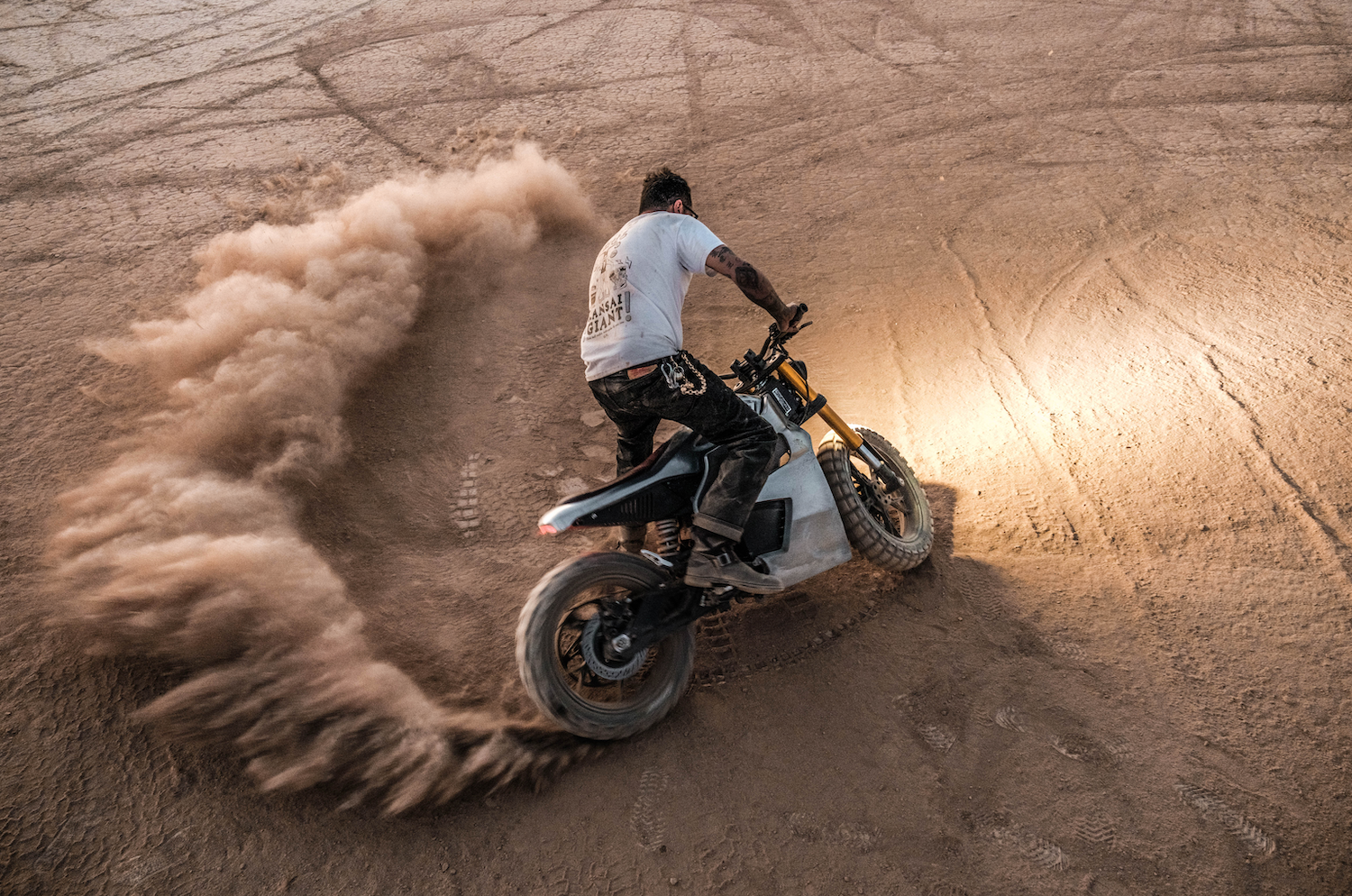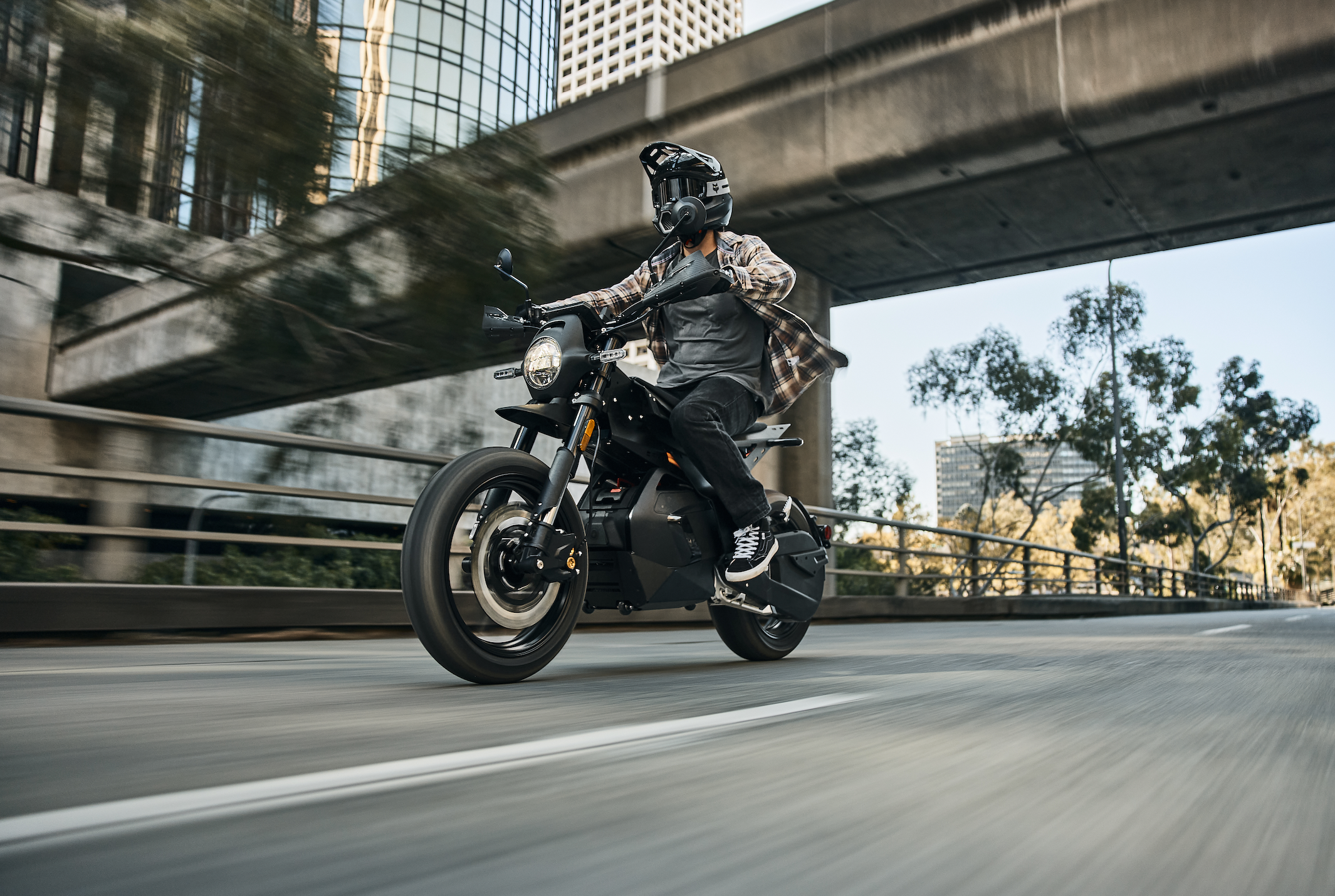Riding a motorcycle is an exhilarating experience, but safety should always come first—especially for new riders. Whether you're on a traditional gas-powered bike or an electric motorcycle like the Ryvid Anthem or OUTSET, wearing the right gear is essential to staying protected. Unlike cars, motorcycles offer no external protection, making high-quality safety equipment crucial for reducing injuries and comfort while riding.
This guide covers all the essentials: helmets, gloves, jackets, boots, and pants—designed to keep you safe whether you're riding a standard motorcycle or an innovative Ryvid Electric Motorcycle.
1. Helmet: Your Most Important Safety Gear
 A helmet is the single most critical piece of safety equipment for motorcyclists, serving as the first line of defense against severe head injuries. Studies show that wearing a helmet reduces the risk of head injury by up to 69% and the risk of death by 42%, making it an essential piece of gear for all riders. Helmets not only protect against impact but also reduce wind noise, debris exposure, and weather-related discomfort, enhancing both safety and the overall riding experience.
A helmet is the single most critical piece of safety equipment for motorcyclists, serving as the first line of defense against severe head injuries. Studies show that wearing a helmet reduces the risk of head injury by up to 69% and the risk of death by 42%, making it an essential piece of gear for all riders. Helmets not only protect against impact but also reduce wind noise, debris exposure, and weather-related discomfort, enhancing both safety and the overall riding experience.
What to Look for in a Helmet:
-
- Safety Certifications: Ensure your helmet meets DOT, ECE, or SNELL safety standards.
- Fit & Comfort: A properly fitting helmet should be snug but not too tight, with no pressure points.
- Helmet Types: Choose from full-face, modular, open-face, or half helmets depending on your preference and riding style.
- Ventilation & Visibility: Good airflow and a clear visor enhance comfort and road awareness.
Pro Tip: Always replace a helmet after an accident or every 5 years, as materials degrade over time.
2. Gloves: Protect Your Hands from Injury

Your hands are vulnerable in an accident, so proper motorcycle gloves are a must. In the event of a fall, hands are often the first point of contact with the ground, making gloves essential for preventing abrasions, fractures, and other injuries. However, gloves are not just for crash protection; they also shield hands from wind, debris, and weather conditions that can cause discomfort or impair grip. Cold temperatures can lead to stiffness, reducing control, while wind and excessive vibration during longer rides can cause fatigue. Investing in high-quality gloves can significantly improve both safety and comfort while riding, ensuring a firm grip and reducing hand discomfort while riding.
What to Look for in Gloves:
-
- Abrasion Resistance: Leather or reinforced textile gloves offer better protection.
- Impact Protection: Look for gloves with knuckle protection and palm sliders.
- Weather Adaptability: Consider waterproof gloves for rain and insulated gloves for cold weather.
- Fit: Gloves should allow for full finger movement while maintaining a firm grip on the handlebars.
3. Jackets: More Than Just a Fashion Statement

A quality motorcycle jacket provides abrasion resistance, impact protection, and weather protection, making it a critical piece of safety gear for riders. Beyond protecting against road rash in case of a fall, a well-designed jacket also helps regulate body temperature, shielding riders from harsh winds, rain, and extreme temperatures. Many jackets come with built-in ventilation systems to keep riders cool in warm weather and removable thermal liners for added warmth during colder rides.
Additionally, reflective materials or high-visibility colors enhance visibility, improving safety during nighttime or low-light conditions.
What to Look for in a Jacket:
-
- Material: Leather offers superior abrasion resistance, while textile jackets provide versatility.
- Armor: Jackets should have CE-rated armor on the shoulders, elbows, and back.
- Ventilation: Look for zippers and mesh panels to keep cool in hot weather.
- Weather Resistance: Some jackets include waterproof or removable thermal liners.
4. Boots: Secure Your Feet and Ankles

Regular sneakers won't cut it when riding a motorcycle.
Motorcycle boots protect against impact, abrasion, and ankle injuries while also providing essential grip, stability, and weather resistance. Unlike casual footwear, motorcycle boots are designed with reinforced soles to prevent slipping on wet or uneven surfaces, extra ankle support to minimize the risk of sprains, and durable materials to shield against heat from the bike’s engine and exhaust in the case bikes with traditional internal combustion engines. Many riding boots also feature waterproofing and breathable linings to keep feet comfortable in varying weather conditions, making them an indispensable part of your riding gear.
What to Look for in Motorcycle Boots:
-
- Over-the-Ankle Design: Protects against twisting injuries and debris.
- Reinforced Toe & Heel: Adds extra impact protection.
- Non-Slip Sole: Essential for maintaining grip, especially on slick surfaces.
- Weatherproofing: Waterproof and breathable materials enhance comfort.
5. Pants: Protect Your Legs from Weather and Road Rash

While many riders overlook motorcycle pants, they are essential for full-body protection. In the event of an accident, your legs are one of the most vulnerable areas, making it crucial to wear pants that offer abrasion resistance and impact protection.
Quality motorcycle pants not only help prevent road rash but also provide comfort and insulation against weather conditions. Many modern options feature reinforced materials such as Kevlar® or Cordura®, built-in armor for knee and hip protection, and ventilation systems to keep riders cool on hot days. Investing in proper riding pants ensures both safety and comfort, whether you're commuting or embarking on a long-distance ride.
What to Look for in Riding Pants:
-
- Abrasion-Resistant Materials: Look for Kevlar-reinforced jeans or textile motorcycle pants.
- Built-In Armor: CE-rated knee and hip protection offer additional safety.
- Ventilation: Zip-open air vents help keep you cool on hot days.
Final Thoughts: Ride Safe, Ride Smart
Investing in quality motorcycle gear isn’t just about comfort—it’s about survival. As a new rider, whether you're on a gas-powered bike or a cutting-edge Ryvid electric motorcycle, prioritize safety with a certified helmet, reinforced gloves, a protective jacket and pants, and sturdy boots.
The right gear can make all the difference in protecting you from serious injuries.
Ready to gear up and ride a Ryvid? Chat with our team to find what's best for you! Ride safe and enjoy the journey!
















